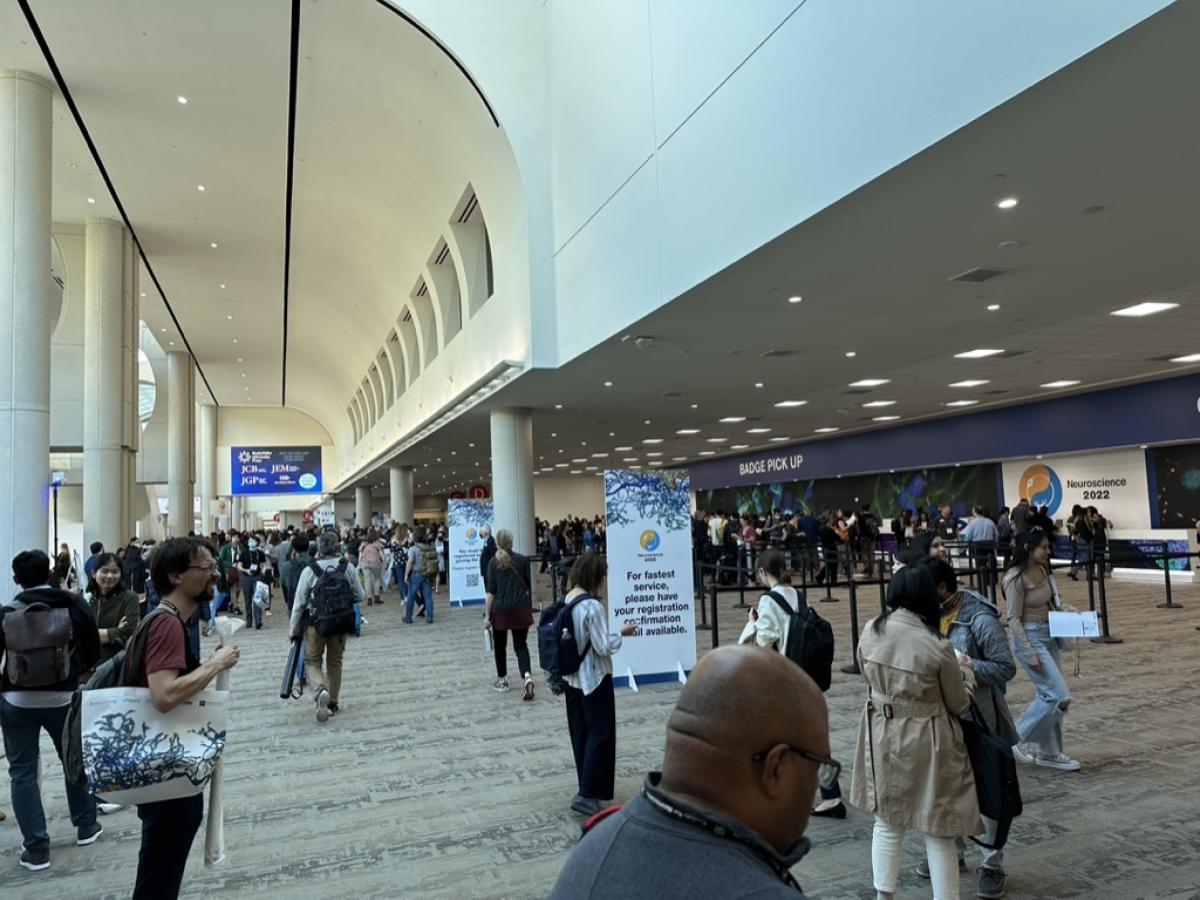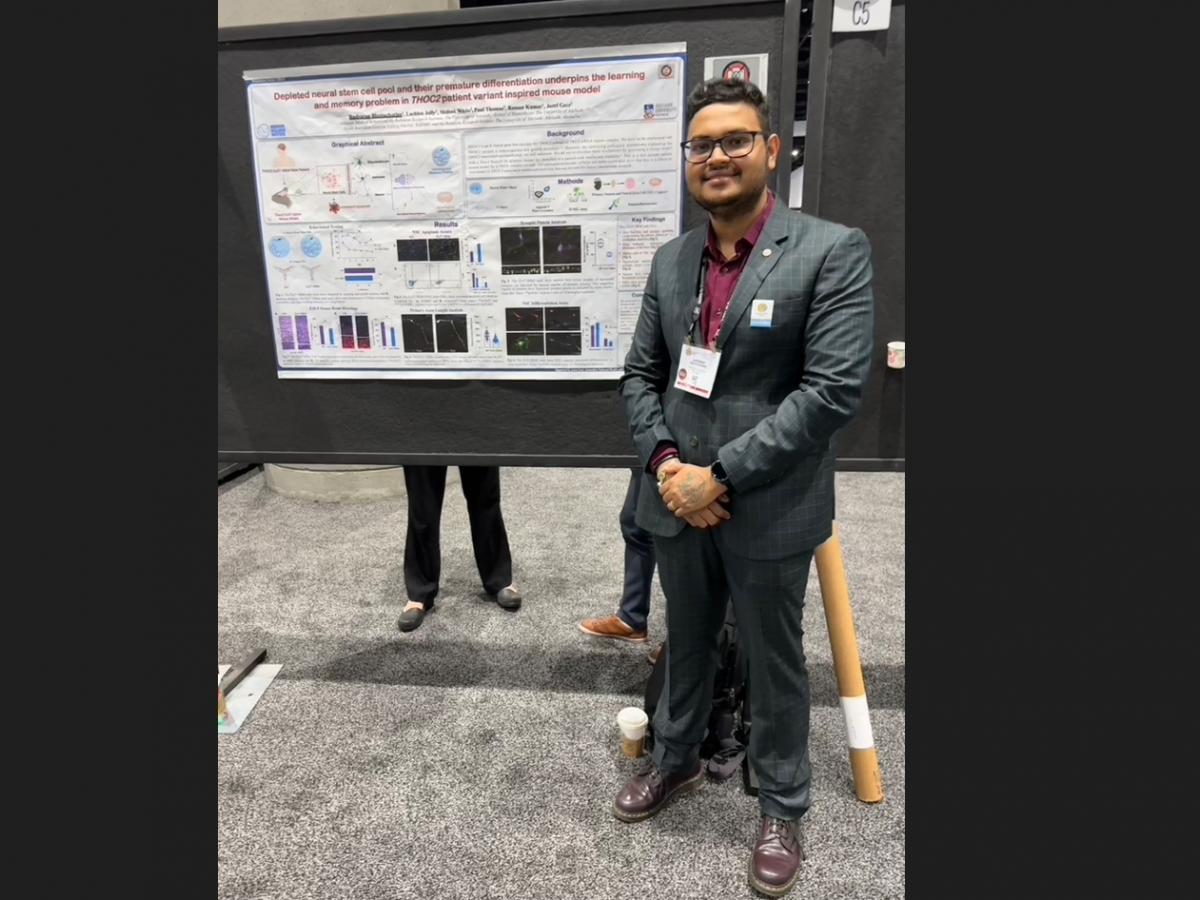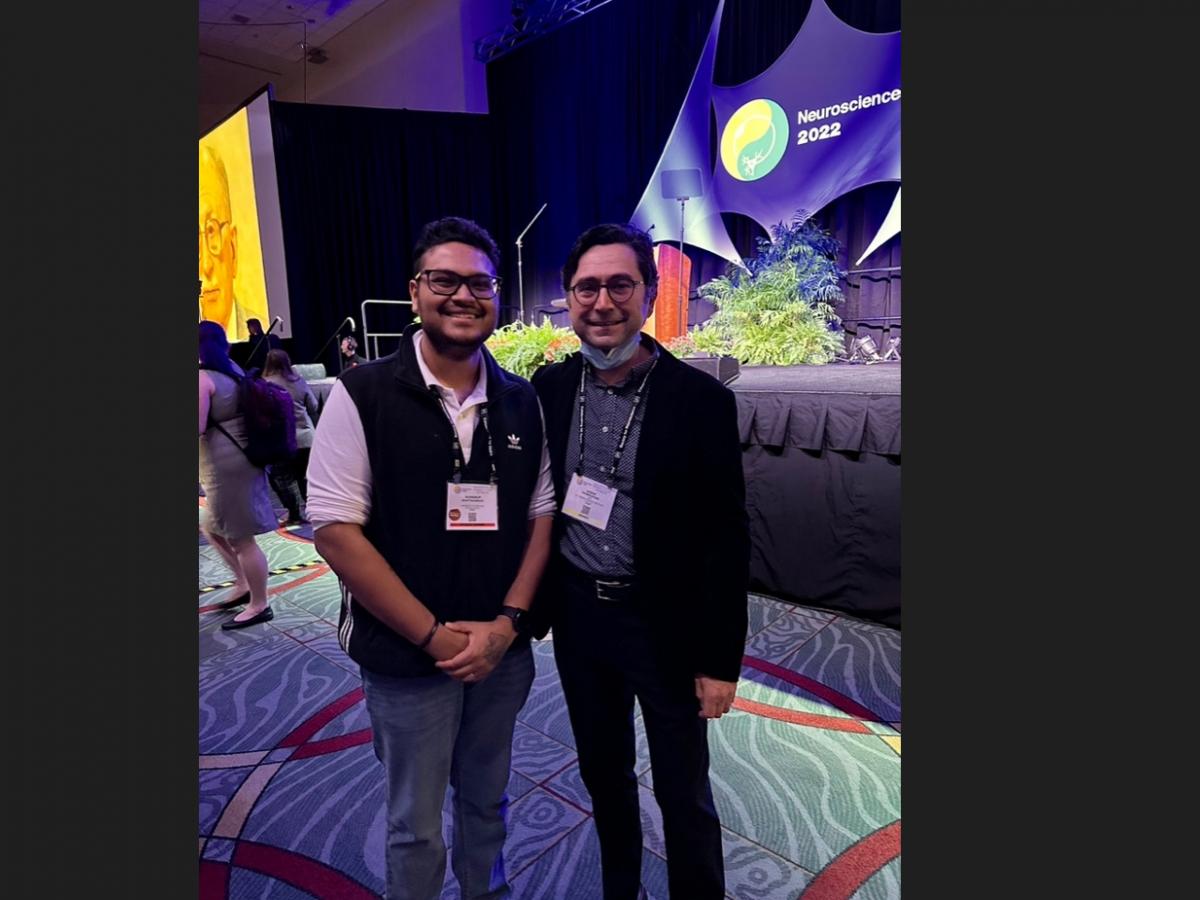Travel story: Rudrarup Bhattacharjee
Rudrarup Bhattacharjee from the Robinson Research Institute travelled to San Diego, California in November to attend the Neuroscience Conference.
This is what Rudrarup had to say about their experience:
What was a highlight of the travel?
Two highlights:
- Meeting the 2021 Nobel Laureate Prof Ardem Patapoutian and discussing with him the state of science and fundamental research funding in USA. Also, I got a chance to take a picture with him.
- Attending such a huge meeting for the first time in my scientific career and get to know and interact with neuroscience researchers from all over the world.
How will the experience support you and your research going forward?
Getting to know so many recent and unpublished studies gave me a great picture of how global Neuroscience firled is moving. Based on the experience, we can design better and more focused research questions which the field is demanding currently and enhance our contribution to the field. Also, I will share the global perspective I gained in meeting with my group on what are the burning topics around neuroscience and childhood diseases which may help strategize our future grant applications towards more favourable considerations.
What was the most exciting thing you learned/experienced as part of your travel?
The great variety of science going around the world with respect to neurobiology. Secondly, I learned a lot about the science in USA as well as many other countries like Germany, Canada and France. I learned how effective communication is a must for the scientific community and the value of getting insight in the state of your own research field. Most importantly, gaining feedback from some world leaders of Neuroscience in my own project was a big accomplishment in my view, which will enable me to make my research as well as the upcoming thesis a much refined and better one.
Please provide details on any researchers or collaborators of significance that you met at the conference and why they are important to your work?
I met Dr Michelle Monje from the Stanford Neuro-Oncology division. Her work on brain cancer and neuron interaction was quite exciting and has the potential to understand crossover. Between the neuro-onco axis. Understanding the regulation of brain cancer development through the perspective of neurobiology (more specifically neurons) is a fascinating area of research and the functional cross-talk between them has immense potential in developing therapeutic targets for the diseases. One aspect, i.e., functional synaptic connection between the tumours and the neurons was very important to me as similar pathway deregulation is observed in intellectual disability arising due to the mutation in gene of my interest. Thus, understanding the regulation could open-up unprecedented areas of biology which may serve as biomarker and or therapeutic targets for treatment.
List labs or research facilities you visited. Please provide a brief summary including how these visits will be useful to your work and/or career development?
I visited Prof Joseph Gleesons’s Lab at UCSD and Prof. Alysson Muotri’s Lab at Sanford Stem Cell Institute, UCSD. Prof. Gleeson’s work emphasizes on paediatric diseases like spina bifida, Autism and epilepsy. His lab uses organoids and many animal models to tackle those questions and more recently his access to large scale human genome sequencing has enabled him to report many rare disease genes, for which the lab is currently working on potential therapy targets. Prof. Gleeson has been a long-term collaborator of our lab and knowing more about his research and few discussions on collaborative projects (on genes which both labs shared the discovery and functional work) was very fruitful for my current as well as future work. On the other hand, Prof Muotri is the Director of Stem Cell Program of UCSD Sanford Consortium and has a specialized organoid biology lab. He has pioneered the brain organoid technology and has been successful in generating many human disease brain organoid models. His expertise has direct implication on my work as he has all the facilities to develop very specific disease organoid models which we might use in later part of my TREX project study to advance it towards therapeutic screening. Besides the collaboration, I have had great opportunity to interact with both exceptional group leaders and had a great discussion on starting a post-doc study in their lab in near future.
What was the most interesting or unexpected moment of your travel?
Meeting with so many neuroscientists, at all levels, from all over the world! Meeting with two Nobel Laureates, Prof A. Patapoutian and Prof J. O’Keefe. Finding how similar San Diego is to Adelaide! Believe me, it just seems a bigger version of Adelaide.



